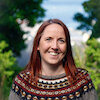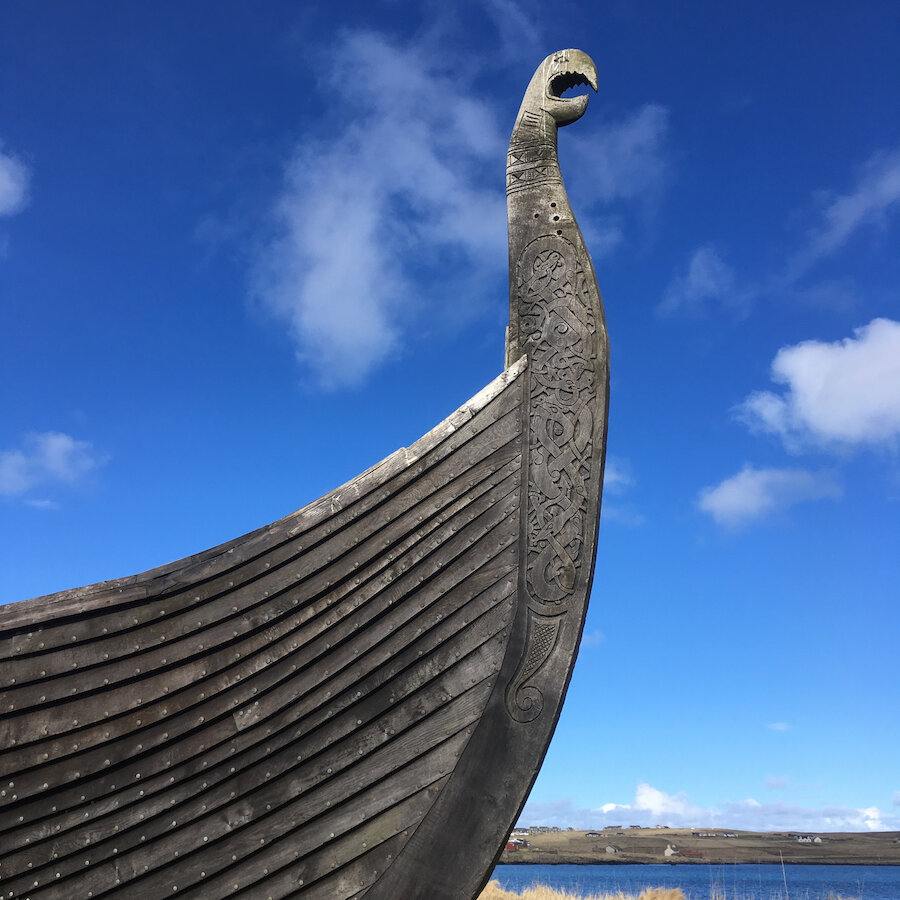The Vikings are thought to have arrived in Shetland from western Norway, they subsequently settled in the islands, giving rise to what is known as the Norse Period. Both Shetland and Orkney became Viking, and later Norse, strongholds until 1469 when the rule was passed over to Scotland, bringing a close to over 600 years of Norse rule; introducing a new chapter to our language’s history as Scots became more widespread and prevalent.
Despite integration into Scotland from 1469, Shetland was slow to let go of their native tongue and even by the late 19th century, some 400 years since passing to Scotland, remnants of this old Norse language could still be found. The last person believed to have spoken Norn in Shetland was a woman called Jeannie Ratter who died in 1926.
Faeroese scholar, Jakob Jakobsen, who came to Shetland at the end of the 19th century, recorded all the Norn words he heard spoken, and those that could be remembered. He travelled all over the islands and compiled these words into a two-volume dictionary of over 10,000 words on the Shetland language which remains, to this day, the greatest work on the dialect ever undertaken.
Today, many of the dialect words still in use have their roots in the Old Norse language that was spoken here at one time.
I’ll draw from the work of Vagaland who wrote a poem about the dialect called Shetlandrie. He writes about the various parts that can be found in a boat, drawing their names from the Old Norse language. He writes:
“Noo, if a boat you mention, dan der mony a Norn name
Fae da tilfers ida boddim, ta da stamreen at da stem.”
This refers to the movable boards in the bottom of the boat, or the loose planks that provide a deck – the tilfers, and the wood that holds the sides and stems of the boat together, often providing a seat – is the stamreen.
Many of the traditional names for boats and the parts that make up a boat or that are used in boatbuilding are the same across Scandinavia, and the language of boatbuilding in these northern Scandinavian countries is often one and the same.
Vagaland continues; this time considering the practice of cutting peat for fuel. He says:
“An hit’s Norn words you’re spaekin whin you wirk ita da hill
Wi da tushkar at you cast wi an da kishie at you fill.”
Describing the process of cutting peats he says that you use a tushkar – which is a peat-cutting tool with a long handle and a thin blade set at right angles to the handle. He also speaks about the kishie that you fill – a kishie is a basket made of straw, carried on a person’s back – that you fill with peats when you’re taking them home from the hill where the peat is cut from the moor.
The Shetland language or dialect is described as Modern Shetlandic Scots (a form of the Scots language) by some linguists. It has a unique vocabulary but, as yet, there are no standard criteria for distinguishing languages from dialects, and whether or not Shetland dialect is a separate language from Scots is much debated.
Personally, I firmly believe that Shetland is a language, and if you want to hear a more in-depth analysis of my view, you can listen to my podcast on the subject.

